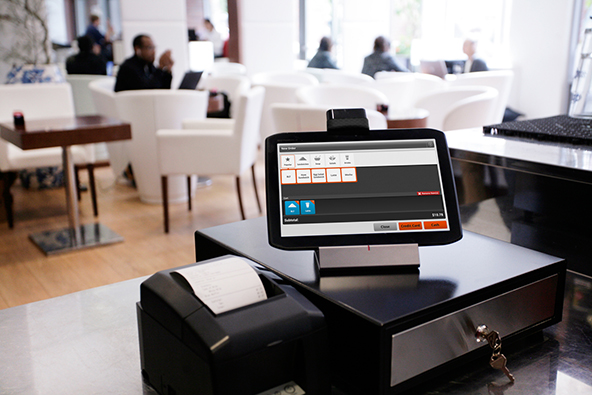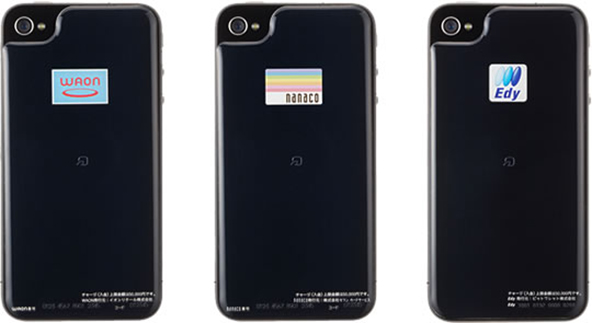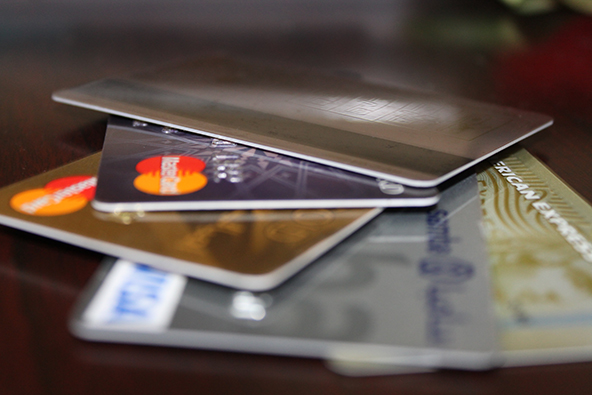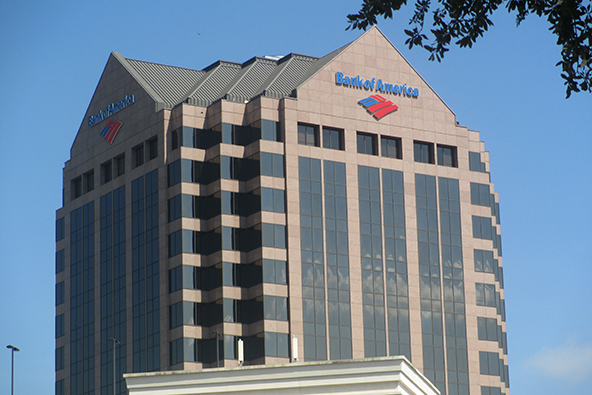Grab-and-Go, Tablets, Square and GoPago

GoPago is a mobile payments start-up, which has been making the news rounds with some regularity over the past few months. And evidently it is not just its name that’s grabbing people’s attention, which was my initial suspicion. In fact, the headline of only one of the three articles Business Insider has dedicated to GoPago features the start-up’s name, while all three mention Square. It was the last of these headlines that finally convinced me to take a closer look at yet another Square competitor. And how could I resist? It read: “Forget Wallets: This Square Rival Wants To Nuke Cash Registers”.
Before diving in, I should confess of getting increasingly tired of constantly running into news reports about never-seen-before, game-changing, Square-killing types of mobile payments services, most of which turn out, on closer inspection, to be little more than a greatly underdeveloped clone of the original. Usually, in an attempt to differentiate themselves from the rest of the Square-killing crowd, such start-ups add a minor unique feature to the core package, and then hype it up with the hope of getting the media’s attention. Alternatively, the start-up mercilessly drums up the amount of venture money it’s taken. In GoPago’s case, it is the latter strategy that has worked.
What Is GoPago?
On the consumer side, GoPago has developed an app, which, when launched, gives you a list of GoPago-participating merchants in your area (currently the service is only available in San Francisco). Then you can select one of these merchants and are taken to that business’ mobile website, which presents you with a menu, a list of specials, popular items, etc. You can then make a purchase, pay with your credit card, verify your identity by entering a PIN and you are done. You then walk into the store, pick up your order and walk out: a “grab-and-go” type of service. Here is a GoPago video that illustrates the transaction process:
The idea is that you save time by not having to wait in line. Well, it is true that every time I walk into, say, the Boylston Street Starbucks here in Boston, I have to wait in line to place an order; often it is a long line. So, yes, it would be convenient to have the option of ordering from my phone so that, say ten minutes later, I can walk into the store and pick up my latte. But then, Square and PayPal Here offer the same capability. So what’s new?
What Does the Merchant Get?
On the merchant side, GoPago offers a free point-of-sale (POS) package that consists of a pre-programmed Android tablet, a cash register and a printer. The tablet stores the merchant’s inventory, manages customer orders and accepts payments in cash or cards. It is also connected to Verizon’s 4G network (also for free), which allows the merchant to communicate with customers placing orders through the GoPago app. Here is GoPago’s POS system in action:
So, GoPago’s POS system looks pretty good. But then, so does Square’s Register, which does everything GoPago does and offers a few extras, such as an easy-to-manage rewards program and business analytics app. So there is no GoPago advantage here, either.
Then there is the pricing. GoPago charges 2.85 percent of the transaction amount for card payments, whereas Square charges 2.75 percent. However, back in August Square introduced a flat-fee monthly payment plan for merchants processing up to $250,000 per year, which, at $275 per month, can save merchants processing more than $120,000 annually a lot of money. In fact, if you switched to the flat-fee plan today and processed $240,000 in swiped transactions over the course of the next calendar year, you would end up paying twice less in processing fees than you would have paid if you kept your pay-as-you-go arrangement. So the pricing advantage, once again, goes to Square.
The Takeaway
GoPago’s biggest handicap in its quest to nuke the country’s cash registers and, eventually, slay Square itself, is not to be found in the service characteristics examined above. The company’s most pressing problem is that it is geographically limited to San Francisco (although it is “coming soon to Dallas, TX”, we are told). As vibrant and start-up-friendly as the Bay Area is, for GoPago to stand any chance against Square, it will have to achieve a vastly larger scale, and do it very, very fast. Otherwise, the pleasure of nuking cash registers around the country — and the world — will belong solely to Jack Dorsey.
Image credit: GoPago.



I just put in my order for the POS system. I believe your statement about being geographically restricted is inaccurate as I am in Wisconsin. I also believe there are a lot more pros for it over square including ability to print receipts, a much more elaborate software allowing you to enter your products/services into the transaction instead of entering the total as you do in square and the fact that it just looks more professional than using my cell phone to process cards. Another part I like is integration with social media. If I had orderable products, I think the preorder feature is pretty cool. These points make me super excited to receive mine!!
Hello Fiona,
If the statement about GoPago being geographically restricted is inaccurate, the fault lies with GoPago itself, because that is what the company says on its website. I think the point is that you may have been able to purchase the system, but the app can only be used in the San Francisco area.
No, the app can be used outside SF-area and Dallas, assuming of course that a merchant (e.g., in Wisconsin) signs up for the app (regardless of whether the merchant opts for the GoPago LIVE POS system). It’s just that GoPago is concentrating its marketing budget on these geographical locations for the time being.